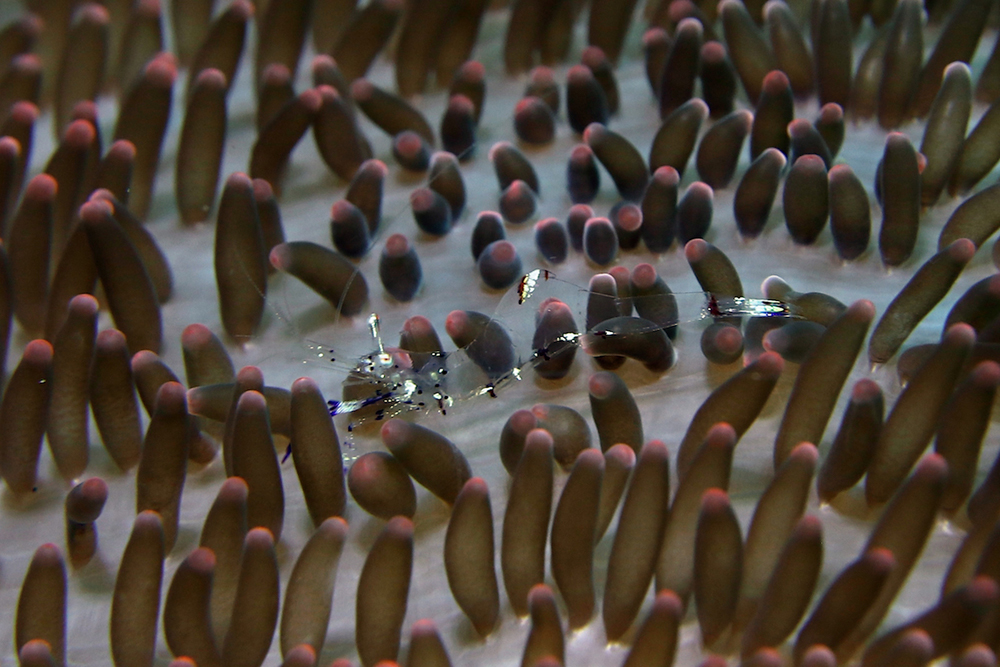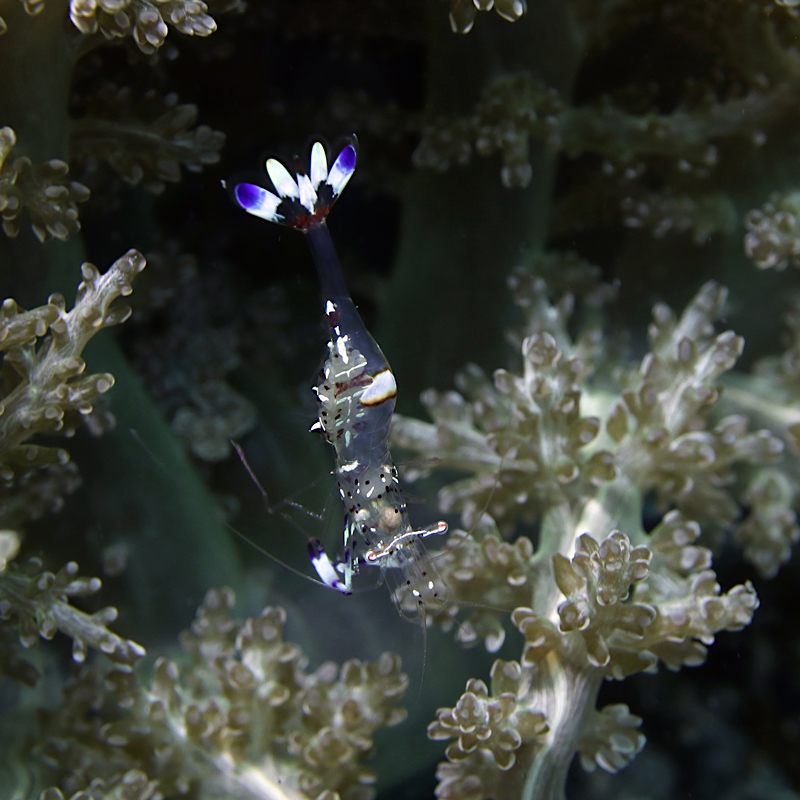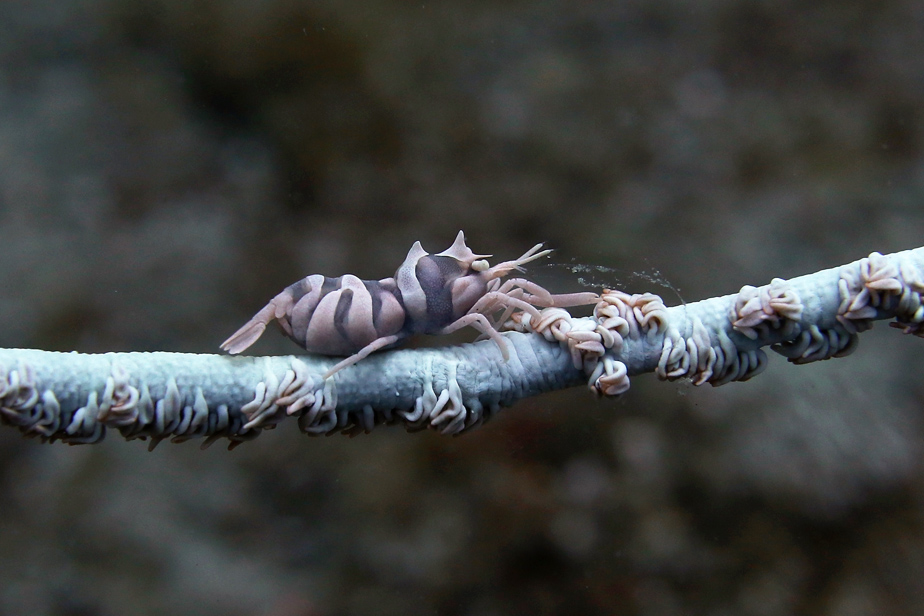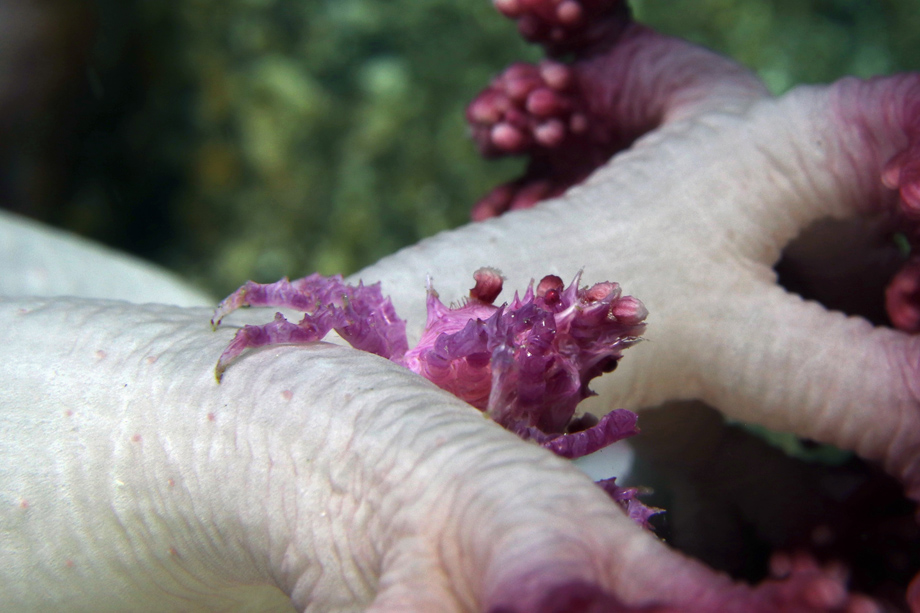This is the second of a handful of posts about the animals of Lembeh Strait, in Indonesia. (The first was this one.) The animal above is a transparent anemone shrimp, Ancylomenes holthuisi (although it used to have the lovelier genus name Periclimenes, and some guides still use it). During my time at Lembeh I became increasingly entranced by these animals, in large part because of their near-invisibility, but also for their behavior. This post will feature a couple of short videos of these animals, along with more photos.
This is also the first post on this site for a while, as I spent the last couple of months finishing a book that follows up Other Minds. With that manuscript sent off, I will return to writing more regularly here. Readership of this site – and of others like it, as I understand the situation – has dropped off markedly over the past year. This has been partly due to the victory of the shortest of short-form media, Twitter and Instagram, but I note also that books are doing quite well at the moment, and I am also seeing more long-form journalism. That is encouraging, even if the “blog,” the format between them, is entering history. Despite this, I have some ideas to work through and this is a good place for them. Today, though, not too many words. Here is a first video. I think this is Ancyclomenes venustus, the Graceful Anemone Shrimp.
The most interesting behaviors there are the shrimp-anemone interactions. The shrimp does a rapid sideways double-wave – something these animals do a lot. It settles back, and the anemone, for no obvious reason, soon starts to nudge, probe, and fuss with the shrimp. This is a reminder that the anemone is a pretty complicated animal, too, not merely a plant-like setting for the shrimp.
In the second video, the anemone is more relaxed. The shrimp does some feeding in the middle of a gentle anemone hug.
Laura Bagge, of the University of Florida, has peered more closely arthropod invisibility than most. She has a couple of papers that describe mechanisms that work along with overall transparency to further suppress the visibility of the animals. I am starting to work my way through them. Here is one, and here is a good popular piece. Another paper describes how exertion tends to make the animals cloudy, hence more visible. We might see a little of that in this photo:
A couple of entirely visible animals can conclude the Lembeh arthropod posts. I think this is a Zanzibar Whip Coral Shrimp.
And this crystalline beast peering over a soft coral is a Candy Crab.*
________________
* Scientific names:
Zanzibar Whip Coral Shrimp: Dasycaris zanzibarica
Candy Crab: Hoplophrys oatesi.





12 thumbs up for the long form blog with outgoing notifications to readers that something’s been posted. Facebook/Twitter/Instagram are way to twitchy for the kind of information you post. FB, especially, makes it difficult to find new posts that get buried in a complex feed. I appreciate that you post the way you do. If you decide you don’t want to maintain a blog, perhaps Quillette or Quanta Magazine might be options. In any case, thank you for putting this information out in public.
Thank you. Much appreciated.
Thanks for this! I’m glad I signed up for the notifications. I am reluctant to get deep into twitter and FB mostly brings me down, so it’s a “novel” (something old is new again!) experience to click and read something I am actually interested in and leaves me better informed (cloudy from exertion?? cool!). I love the photos but the videos really let you get to know the animal a little bit. “Hold me while I feed my face.” <— a clear illustration I am a product of the times and can't resist tweet-speaking your content inside your own blog.
I am reminded of Wallace looking at the pristine waters in Amboyna –
“the clearness of the water afforded me one of the most astonishing and beautiful sights I have ever beheld. The bottom was absolutely hidden by a continuous series of corals, sponges, actiniæ, and other marine productions, of magnificent dimensions, varied forms, and brilliant colours. … It was a sight to gaze at for hours, and no description can do justice to its surpassing beauty and interest.”
http://wallace-online.org/content/frameset?pageseq=1&itemID=S715.1&viewtype=text
Thanks for sharing this over the years, even if you do decide to draw a line. You kindly signed a copy of ‘Darwinian populations’ for me after the Imre Lakatos lecture in the LSE some years ago!
Hi Dominic. That Lakatos Lecture was a while ago now!
Very nice Wallace passage.